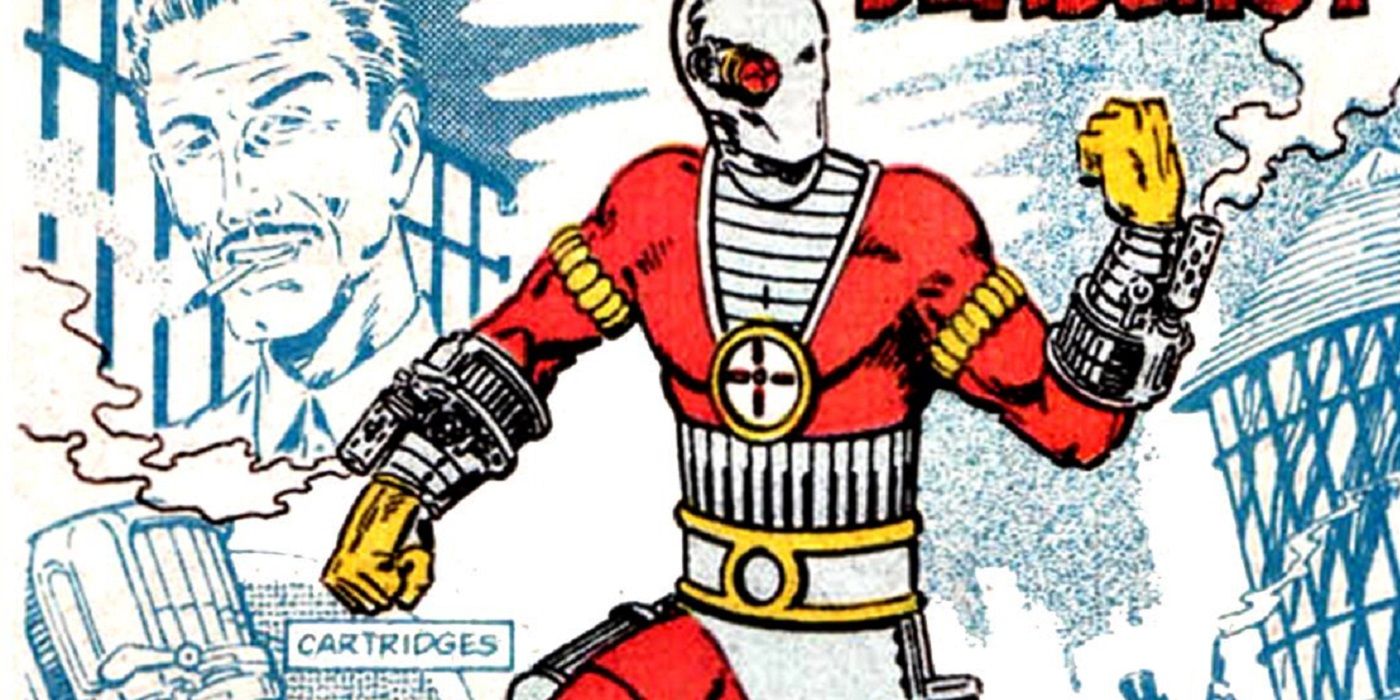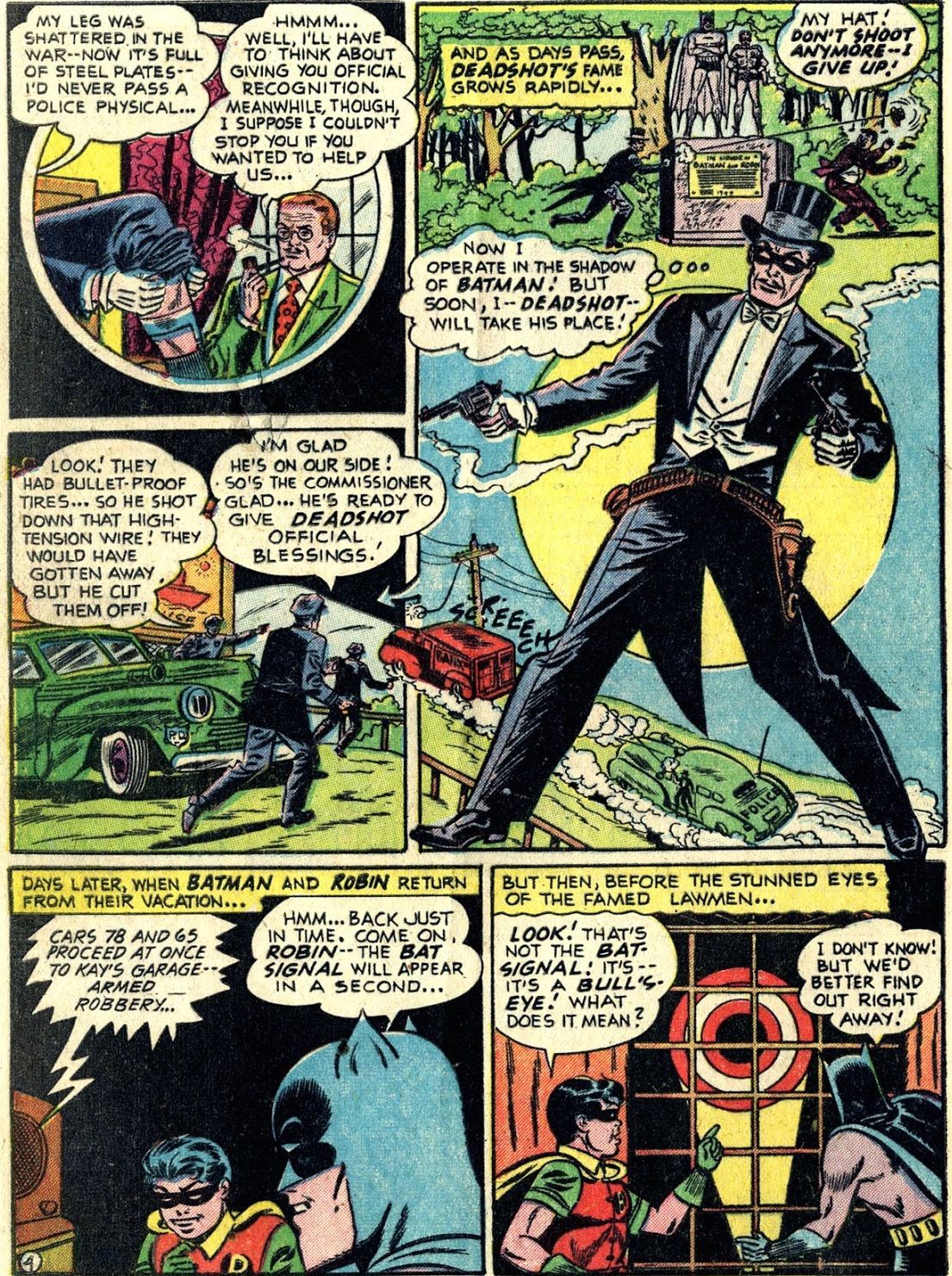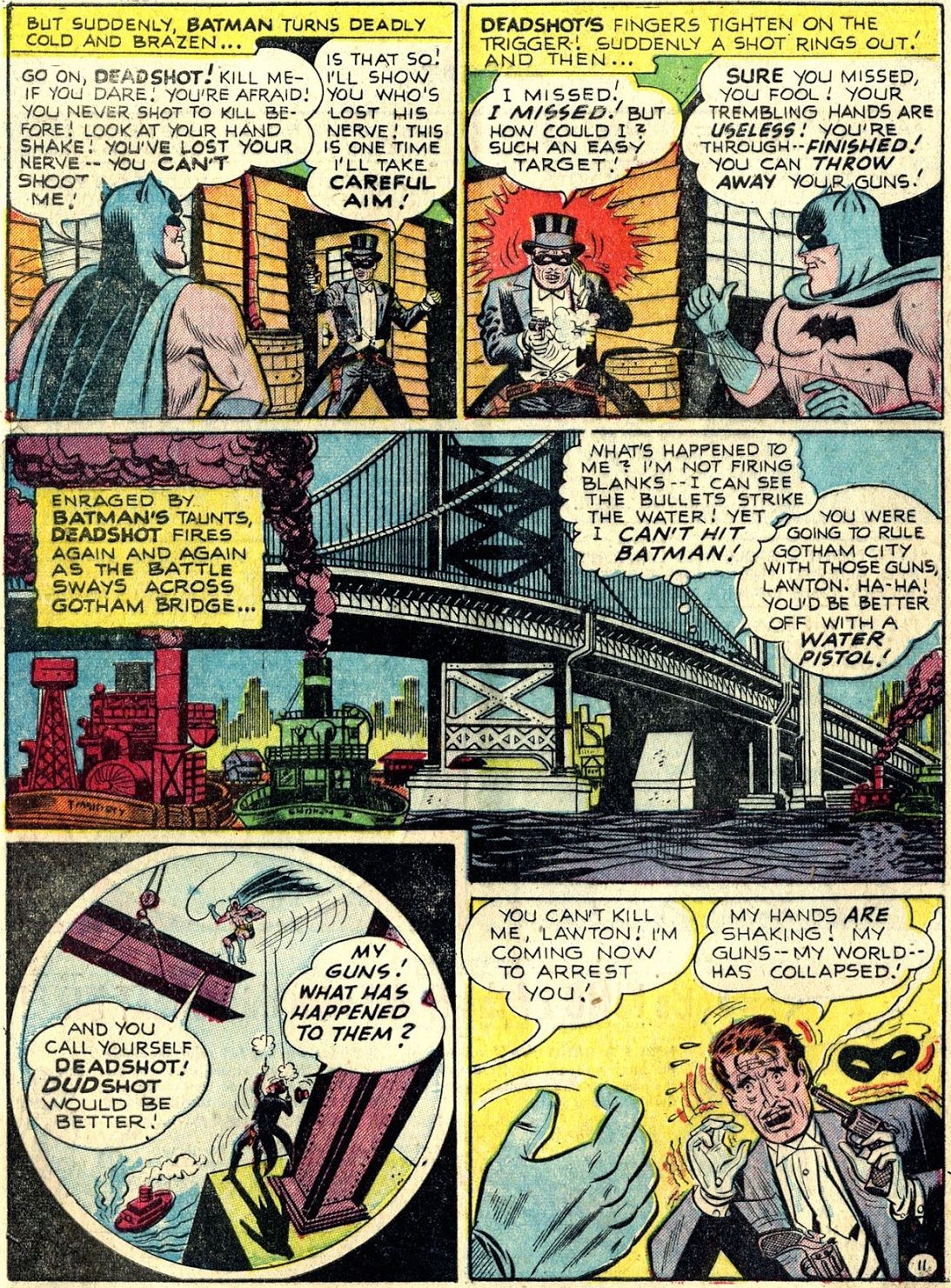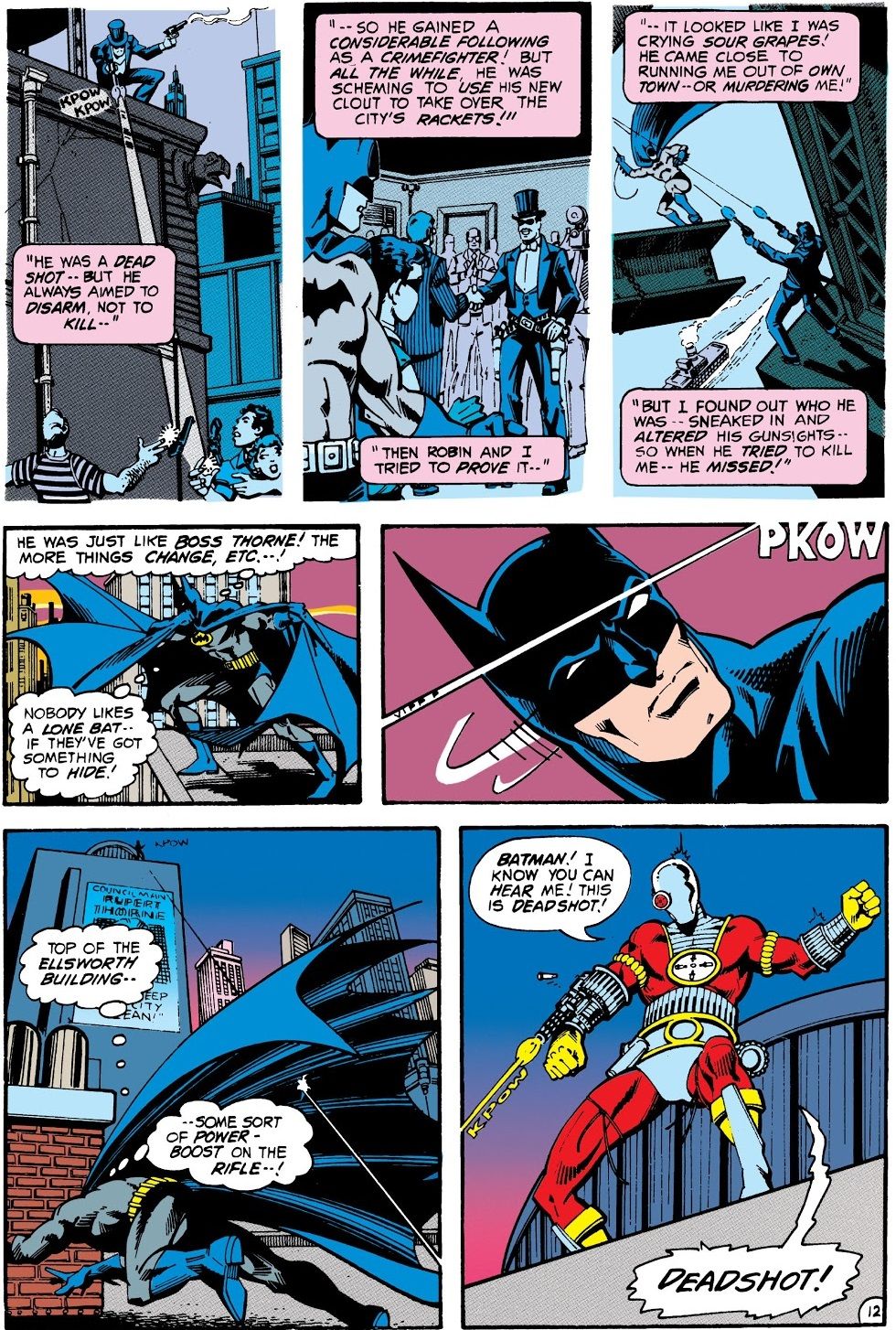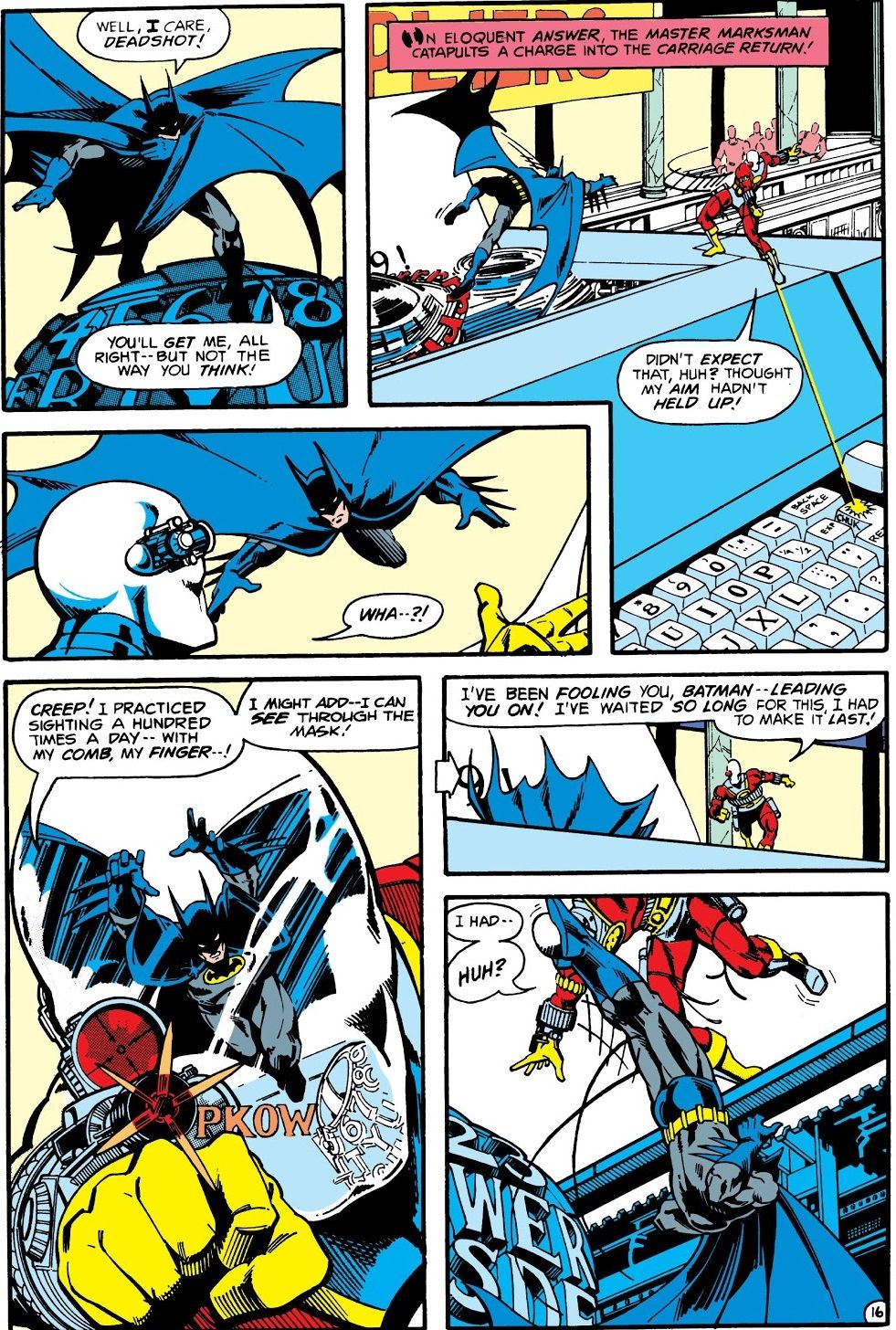This is "I Remember Well," a brand-new feature spotlighting instances in which writers pull out long-forgotten plots or attributes of comic book characters. I have a similar bit called "I've Been Here Before" when writers pull out their own old plots/characters, but this is when different writers do it. I also have a bit called "Provide Some Answers," when writers resolve long-forgotten plots, but this is when writers don't resolve anything, they just bring back something that hadn't been used in a long time.
Today, we look at the shocking return of Deadshot to comic book prominence, a revival that was totally unplanned!
David Vern Reed, born David Levine, was one of the most curious Batman writers of all-time, because he wrote the Dark Knight at two VERY different periods in the history of the character, but because he wasn't credited back in the early days of his tenure and used a pseudonym for his latter run on the Bat-books, there was not a whole lot of attention paid to him during his lifetime. And since he passed away in the 1990s, he was never able to get his due like other Silver Age and Bronze Age writers. It's a shame, because he was a talented writer.
Levine was a pulp fiction writer in the 1930s and 1940s, known for his science fiction work. Two of DC's most famous editors, Mort Weisinger and Julius Schwartz, had worked with science fiction writers early in their careers, so when they both went to work at National Comics (later DC), they each tended to keep in mind the science fiction writers that they had worked with in the past. Levine was friend with Schwartz, so Schwartz is often credited with getting Levine into comics, but I think Levine (let's call him Reed from this point) actually was first hired by Weisinger, during Weisinger's period as the editor on the Batman titles, as well as the Superman books of the late 1940s. Along with Bill Finger, Reed was one of the major Batman writers of the early 1950s.
Reed, like Finger, would often introduce new villains for Batman to face, but they were almost always one-and-done characters (while continuing to reuse the established Batman rogues regularly, like Joker, Catwoman, Two-Face and Penguin). In 1950's Batman #59, Reed wrote the introduction of a seemingly one-off villain named Deadshot. Floyd Lawton was a bored rich guy who decided to use his sharpshooting abilities to become a criminal, but first pretend to be a superhero and oust Batman from his perch at the top of Gotham City's crimefighting kingdom (to better to take advantage of Batman's absence when Deadshot started committing crimes).
This comic came out at the tail end of Bob Kane's direct involvement in the Batman titles. You see, Kane had given up on the comic book to concentrate on the Batman comic strip and when that ended, Kane really wasn't all that interested in returning to the regular comic books anymore. So he cut a deal with artist Lew Sayre Schwartz where Schwartz would draw the majority of the comic book, just leaving very light pencils where Batman and Robin were in the story and then Kane would go in and pencil Batman and Robin and then Charles Paris would ink it all. Kane, of course, would take credit for drawing the whole thing and pay Schwartz off the books. This continued through 1953, at which point Schwartz quit and Kane hired Sheldon Moldoff to take over, with Moldoff now doing ALL of the art under Kane's name, even the Batman and Robin figures.
It's a strong story, with Batman defeating Deadshot through basically just breaking Deadshot's confidence (by secretly messing with the scopes on Deadshot's guns). Look at how well Schwartz and Paris nail Deadshot's freakout (Schwartz and Paris were BRILLIANT at freakouts. They had just a few months earlier drawn the classic Joe Chill freakout when he realized that the little kid who watched him murder the Waynes grew up to become Batman)...
Okay, so that was it for Deadshot. Eventually, Reed went back to the world of science fiction, writing novellas and also working as a writer for various magazines. In the mid-1970s, though, Reed's friend, Schwartz, who had now been the editor on the Batman books for a decade, hired Reed to become the regular writer on Batman again in 1975 (with Denny O'Neil working mostly on Detective Comics at the time). Reed is most famously associated with a two-year stint with John Calnan, but before that point, he worked with a number of different artists.
Steve Englehart, though, then did an acclaimed run on Detective Comics in 1977. Englehart's run was designed to last for about a year's worth of issues (as the book was bi-monthly at the time) and Englehart wrote them full script style. He was planning on taking some time of from comics and live in Europe for a bit, and so he just sent in the full run and that was that. However, something caused a problem (as I wrote about in an old Comic Book Legends Revealed many, many years ago)
Well, you see, at the very same time Englehart was making comics history in Detective Comics, over in the pages of Batman, writer David Vern and artists John Calnan and Tex Blaisdell were doing ANOTHER memorable storyline, the famous "Where Were You on the Night Batman Was Killed?" storyline where each issue features a different villain explaining how THEY were the one who should be credited with finally killing Batman (of course, Batman turns out not to actually be dead) and the issue featuring the Joker was scheduled to be released [was the same month Englehart was scheduled to have a Joker spotlight issue]. So Schwartz, not wanting to have BOTH Batman books feature the Joker in the same month, asked Englehart to write an extra script so that they could bump Joker's appearance to another month, and the famous tale of Joker's Laughing Fish showed up with later.
Schwartz suggested that Englehart revive Deadshot for the fill-in story (to this day, Englehart has no idea why Schwartz decided THEN to revive a character who had gone nearly thirty years without being used) and Deadshot made his return in Detective Comics #474 by Englehart, Marshall Rogers and Terry Austin...
As I noted before, Englehart had nothing to do with the comics once they were scripted, so he didn't even see Deadshot's new costume designed by Rogers until he saw the finished pages (Englehart and Rogers later became very close collaborators on future projects, but this one was strictly done through Schwartz. Englehart might have worked the awesome wrist guns into the script, but he's unsure). Rogers' iconic design, of course, led to the character being used a lot more in the years since, especially during John Ostrander's Suicide Squad series, where Deadshot REALLY became famous.
Isn't it fun, though, that it was a Vern/Reed story that sort of forced the return of Vern/Reed's own creation?
I'm sure you folks have other ideas for examples for this column, so send them my way at brianc@cbr.com! I'd love to get a month's worth of them up!

